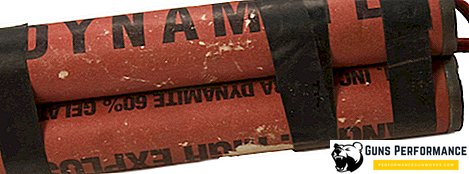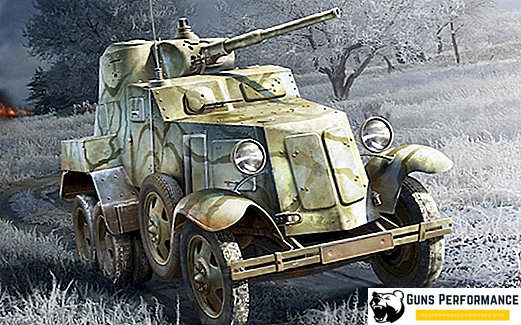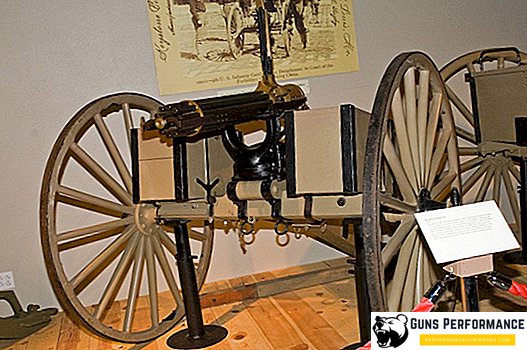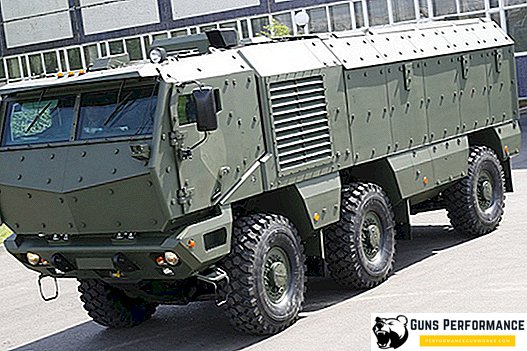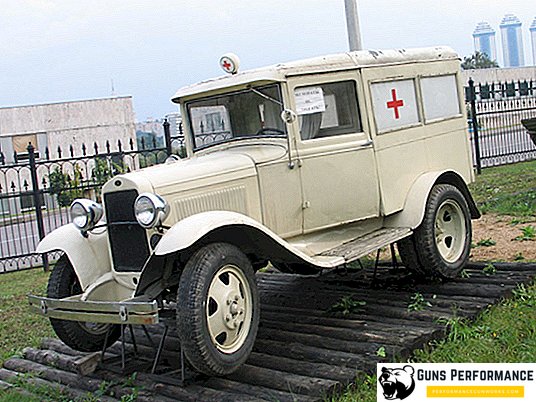GAZ-61 - a complex of Soviet passenger cars with all-wheel drive. In its years, cross-country transport bypassed many foreign competitors. Model GAZ-61-73 became the first closed-type sedan, equipped with all-wheel drive. Auto used for civilian purposes and during the Second World War.
The history of the creation and development of GAZ-61

The development of a new project began in 1938. The chief appointed the notorious V.A. Gracheva, who worked with his team of experienced professionals. New car planned to replace the outdated GAZ-21M. At the start of design, engineers considered the American car based on the Ford V8 with all-wheel drive as the basis.
In the late 30s of the last century, high-traffic cars with a pair of driving axles became very popular. The Soviet industry did not lag behind international trends. The pioneer in this direction was the Gorky Automobile Plant. A car with all-wheel drive was required not only for use in the army. She wanted to send to the study of unknown territories and construction sites. In the middle of the 38th year, the designers received a technical task, on the basis of which they began to design new equipment in September.
During the war, the conditions for development were harsh. Specialists worked with small breaks, as the country's leadership set short deadlines for developing a new transport. Originally wanted to produce a car in the open body type phaeton. In consequence, this model was implemented as a modification of GAZ-61-73.
In the summer of 1939, field testing began, which ended in the autumn of the same year. The test results staged the first persons of the state. The car accelerated to 107 km / h, while spending no more than 14 liters per 100 kilometers.
To speed up the development, the designers decided to include parts of other production cars in the vehicle. Some of the components taken from the car "11-40" and GAZ-MM. The first prototypes "worked" on the American Doodge D5 engines. For mass production, Soviet power units were used. For the new concept from scratch have developed a front axle and razdatku.
In the 40th year, a new project was presented to the public at the All-Union Agricultural Exhibition. The car was evaluated as a promising development, which in the coming years was planned to produce with high priority. Specifications allowed to overcome the 43-degree ups, off-road and drifts (up to 40 centimeters). If necessary, it was possible to transport a trailer with a maximum weight of up to 700 kilograms.
Tests took place at the Gorky ground. In the course of them, it became clear that the car can drive into the stairs with a slope of no more than 30 degrees. At the end of the design, Grachev decided that three bodies would be available to consumers: a phaeton (GAZ-61-40), a closed sedan and a semi-cargo pickup (GAZ-61-415). GAZ-61-73 had no competitors in the years of production. He moved on any surface due to increased clearance.
The beginning of the release was in the winter of the 41st year. Because of the harsh temperatures, the phaeton assembly (GAZ-61-40) was transferred to a tank repair plant in Moscow. For the military developed the GAZ-61-417, which was equipped with 57-mm anti-tank gun. The Soviet army received fast and maneuverable vehicles capable of disarming enemy tanks. GAZ-61-417 was unable to show all its power from a small number of issued copies. The GAZ-61-417 was already produced in 1942, because of the war it was not possible to supply six-cylinder engines and parts for the hull in the right quantity. GAZ-61-73 were produced the longest - until 1945.
Interior GAZ-61

Comfortable conditions, except for a closed body, was not. Due to the pre-war crisis, the design did not include heating equipment. In the central part of the torpedo there was a cigarette lighter and an ashtray. The torpedo was made of metal and painted green. The steering wheel consisted of three spokes. He was made subtle, so that he would not restrict the driver’s visibility. Power missing.
The dashboard copied from the emki, making minor adjustments. There was an oil pressure gauge, as the power plant was subjected to heavy loads. On the speedometer, the maximum speed was limited to 140 km / h. In fact, the car could not reach such a mark. All indicators were in close proximity to the driver.
To the right of the steering wheel was the ignition socket. Opposite the passenger seat was a glove box for storing small items. Switch gearbox was in the floor, razdatka activated by a lever located under the panel. The doors inside were trimmed with good quality fabric. For airing used the window on the driver and the rear left door. The sofas had a good filling, covered with a cloth. It turned out soft and comfortable. In the cabin by the standards of the 30s-40s of the last century there was a lot of free space. The interior was attended by a minimum amount of plastic elements.
GAZ-61 design

Technical characteristics of GAZ-61-73:
- Length - 4.8 m;
- Width - 1.8 m;
- Height - 2.1 m;
- Wheelbase - 2.8 m;
- Clearance - 21 cm;
- Weight - 2.2 tons;
- The volume of the power unit - 3,485 l;
- Power plant power - 85 hp at 3.6 thousand revolutions;
- The maximum speed is 107 km / h.
Under the hood put a gasoline engine with six cylinders, which worked together with the carburetor. The engine device is performed on the lower valve type. The working volume was 3,485 l. The power unit at 3.6 thousand rpm developed 85 horsepower, which ensured high throughput and acceleration to 107 km / h. Most of the parts were made of cast iron, so that the motor had a large stock of working resource. The average fuel consumption was 14-15 liters per 100 kilometers.

The power plant worked in conjunction with the mechanical type gearbox. It consisted of four steps - three front and one rear. The semi-centrifugal transmission consisted of a single disc and was made on the dry type.

Both suspension (front and rear) GAZ-61-416 and other varieties were dependent. Their design included transverse springs to improve quality. For the first time in history, the specialists of the Gorky Automobile Plant installed a front axle. The first serial batches were received by Rzeppa CV joints. In the future, they were replaced by Bendix-Weiss. As mentioned above, the high cross-country achieved by increasing the clearance - up to 21 centimeters. The car turned out to be a real SUV that overcame any obstacles.
The only weak point of the car was the brake system. At each wheel there was a drum-type mechanism. However, due to the heavy weight of the GAZ-61-417 and other modifications, they quickly wore out and required replacement.
Modifications GAZ-61
On the basis of the standard version, Gorky engineers released several varieties that differed from each other in body type:
- GAZ-61-40 - a car with an open body (phaeton). The company managed to collect several small parties that went into service with the military leadership of the Red Army. GAZ-61-40 weighed 30 pounds less than the standard version. An additional fuel tank of 50 liters was added to the device. Spare wheels were attached to the front wings of the GAZ-61-40;
- 61-73 - a version with a body type closed sedan, which was collected before 1945 in small series;
- GAZ-61-415 - a pickup truck with closed cab. GAZ-61-415 is not included in mass production;
- GAZ-61-417 - all-wheel drive pickup, which can accommodate two people. There were no standard doors, and a tarpaulin replaced them. GAZ-61-417 used to transport 45-mm anti-tank caps. It is also known by the name GAZ-61-416 (indices differ in different documentation).
Advantages and disadvantages of GAZ-61
Experts identified a number of main advantages of the GAZ-61:
- The body was collected from high-grade metal;
- Powerful motor provides high throughput;
- The car overcame any off-road due to high ground clearance;
- The cabin was spacious, there was plenty of space for the driver’s head and legs;
- Both sofas were made from quality materials that provide comfort;
- The torpedo had a cigarette lighter and an ashtray;
- Dynamic characteristics were high;
- The basis of the work lay all-wheel drive system, which in those years was just beginning to gain popularity;
- The possibility of towing trailers weighing up to 700 kilograms.
Despite the large number of advantages, the owners and experts identified some drawbacks:
- Great weight, because of which the quality of some technical units suffered;
- There were no hydraulic mechanisms in the steering gear and brake system;
- The seats were not equipped with seat belts;
- It was impossible to regulate the position of the steering wheel and sofas;
- The design was deprived of heating equipment from the crisis in the pre-war years;
- Wheels of small size limited the ability to overcome difficult off-road sections;
- In the interior trim, almost did not use plastic parts, which negatively affected in winter.
Due to the start of the war, it was not possible to fully implement the plans for the production of new cars. Due to the lack of materials, each modification was produced in small batches.
What can be concluded?

GAZ-61-415 and other modifications - one of the best developments of the Soviet engineering. The main feature is that the team of engineers under the leadership of Grachev managed to create advanced transport in the shortest possible time. The Gorky enterprise managed to put on the market fast and manoeuvrable GAZ-61 cars, which had high maneuverability due to a large ground clearance and powerful engine. GAZ-61-415 and other types were in demand not only in the army, but also in the national economy. The machines were used to study previously unknown territories in Taiga and other hard-to-reach areas.


